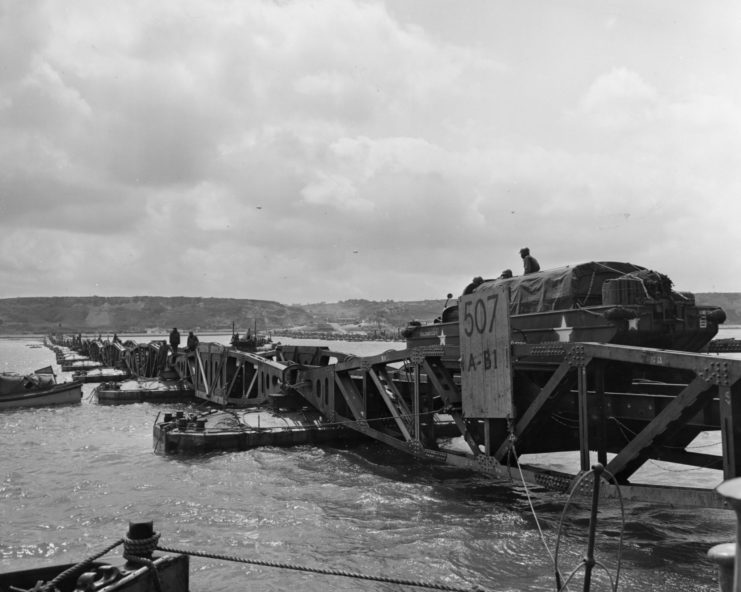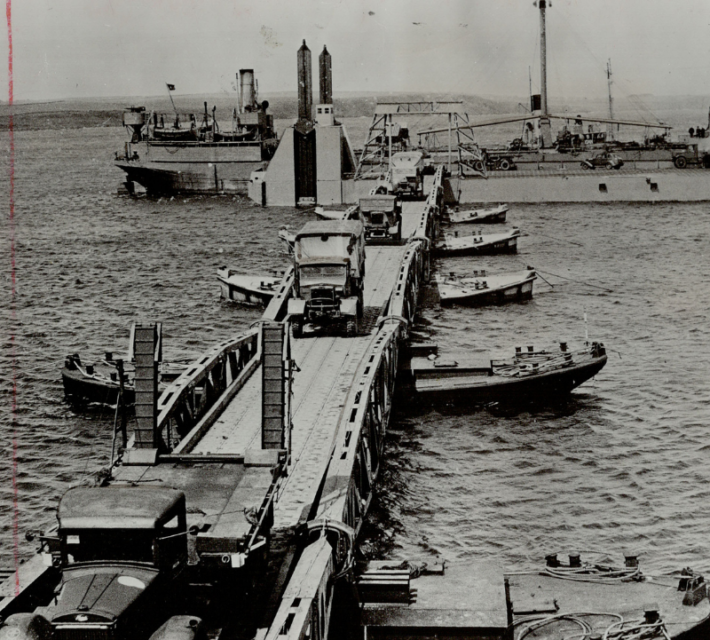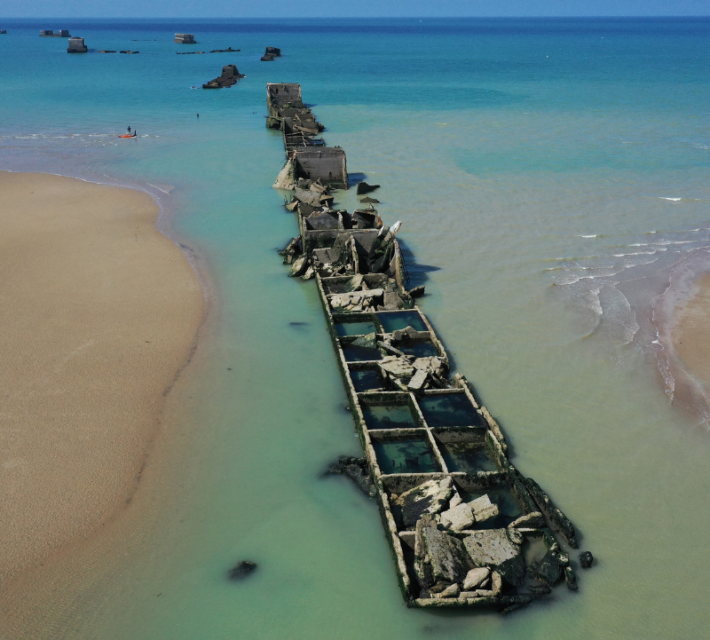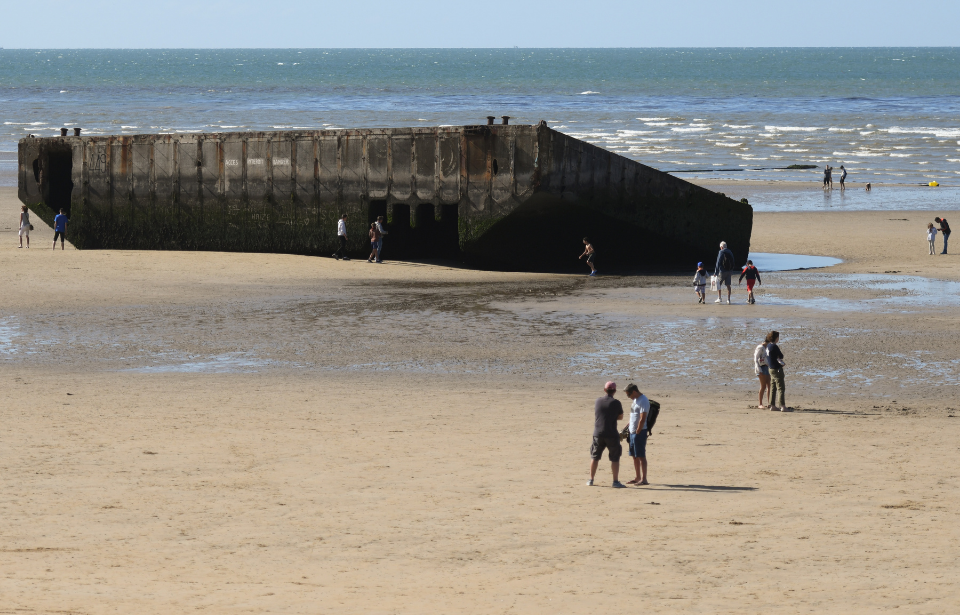To pull off the greatest seaborne invasion in history that took place on June 6th, 1944, the Allies had to pioneer a whole range of new task-specific equipment. The objectives and planning for D-Day were immense and required the movement of 150,000 Allied troops onto French beaches, villages, and towns. Their solution was innovative: the Mulberry Harbor.
An unprecedented logistics problem
With such a large number of troops, transporting them was the first and seemingly most important hurdle. However, once the troops were on Europe’s shores, the Allies faced a whole new problem.
The initial 150,000 man assault didn’t end at the beaches, but would continue on through France and onwards to Berlin, with more and more men arriving in Europe afterward. It was this continued push that would be one of the toughest challenges that the planners of the operation faced. The advance into the continent would need more than 1 million men, who all needed to be equipped with weapons, supplies, and clothes.

In addition, the Allies would need to keep the supplies coming to restock the troops, camps, hospitals, workshops, and airfields. Fuel was extremely important, as it kept the tanks running, aircraft flying and trucks moving. If the invasion was to succeed in the long run, this logistical nightmare had to run perfectly.
British Prime Minister Winston Churchill doubted the plausibility of achieving this perfection, as he understood the effort involved. While planning the operation with General Dwight Eisenhower, Churchill requested that resources be dedicated to establishing a way of feeding the enormous landings.
Ideally, French ports would be captured and reused by the Allies, but the larger (an operation on the scale of D-Day would need the biggest ports available) nearby ports at Cherbourg and Le Havre were heavily defended.
The portable port

Churchill’s request was answered with a temporary artificial port. This port would be brought with the Allied forces and placed on the coast of Normandy to enable the immediate delivery and offloading of all the necessary supplies for war. To protect the port from the rough open waters, the invaders would also bring a man-made breakwater.
The breakwater was made from sunken ships and huge concrete structures called caissons. These would surround the harbor and calm the seas within it, so ships could dock and offload easily. Within the harbor, long piers were anchored to the seabed and extended to the beaches. These were used by vehicles to move back and forth from the ships to the beach.
These components were prefabricated in England and were spotted by German reconnaissance, who fortunately had no idea what they were. Tugs towed the concrete caissons over the channel at a speed of 5 mph, and work on the harbors began on D-Day once its respective beach was secure. In total, the Allies towed 1.5 million tons of components for the ports, which were code-named Mulberry Harbors.
Two harbors were used, Mulberry A was located on Omaha beach and used by the U.S., while Mulberry B was located on Gold Beach and used by the British. In the first week of the invasion, the harbors were erected and offloaded 200 ships and 180,000 men.
How effective were the Mulberry harbors?

The Allies used the ports to great effect in the immediate weeks after D-Day, until a large storm struck the area on the 19th of June and caused widespread damage to the harbors, which were built to survive in summer conditions. The storm was the worst to hit Normandy in 40 years and completely wrecked the U.S. Mulberry A, with 21 out of the 28 caissons in the breakwater being destroyed.
Mulberry B on Gold Beach was also battered by the storm but managed to survive mostly intact. As it was the last remaining port, it was reinforced with parts of Mulberry A and extensively used over the next 10 months, almost seeing the end of WWII. During this time, the harbor, which became known as “Port Winston,” had offloaded 500,000 vehicles, 2.5 million men, and 4 million tons of supplies.
It is regarded as one of the finest pieces of wartime engineering.
The reasoning for using the harbors was solid, and the remaining port worked exceptionally well throughout the remainder of the war, but since then, the question has been asked whether they were necessary.
More from us: Lost 52 Project: Navy Honors Explorer Who Discovered 7 Sunken Subs
After D-Day, offloading cargo straight onto the beaches was easier than anticipated with the use of flat-bottomed vessels like landing craft and Landing Ship, Tanks (LSTs). In fact, after the harbor at Omaha was obliterated by the June 19th storm, it began taking supplies directly onto the beach, and eventually outpaced the daily tonnage of the Mulberry harbor.
Today, pieces of the Mulberry harbor at Arromanches can still be seen, semi-submerged by the sea.
